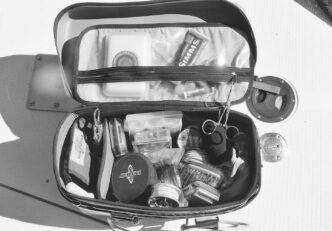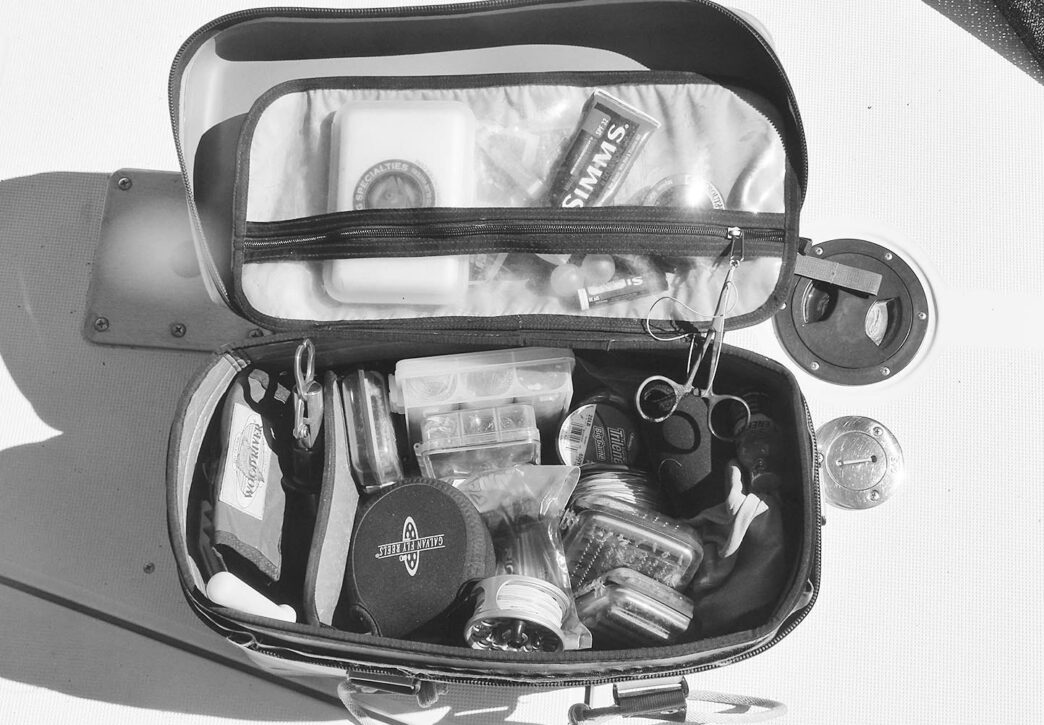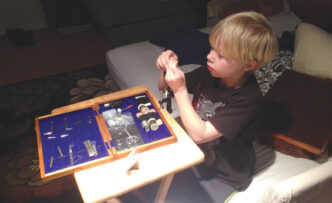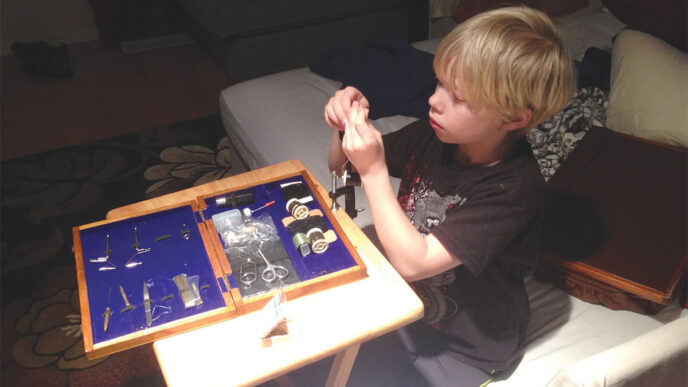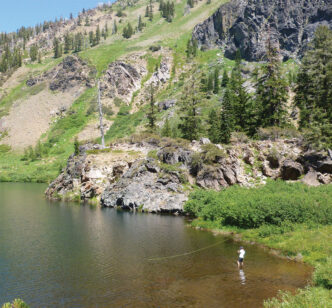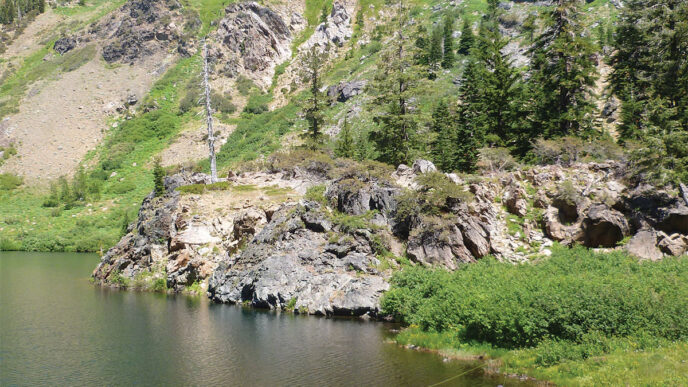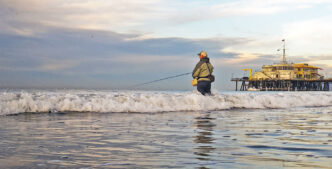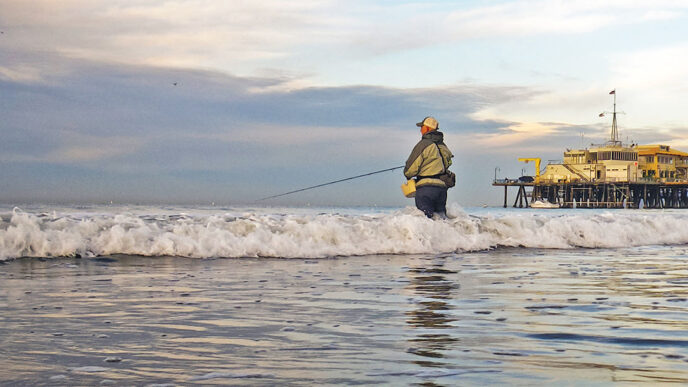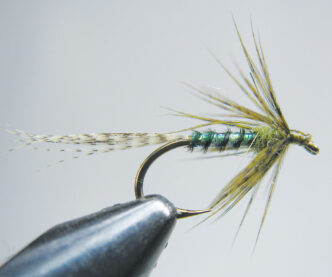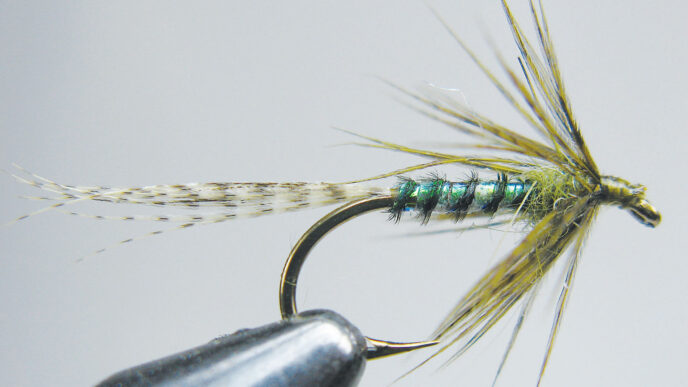This week, I read a book and bought some shoes. The book was titled Simple Fly Fishing. (See the book review on page 9.) The premise of the book is that fly fishing has become needlessly complex, and we should strive to get back to the basics of the sport. However, as simple as fishing might be, there is a sport even more simple at its core. It’s called running, and the only gear required is a simple pair of shoes. Or so I thought.
Last Sunday, I finally admitted that the duct tape had met its match, and my Chuck Taylors needed replacing. The local shoe place had gone belly up, so I Googled the next best choice. I didn’t want to patronize the big-box conglomerate that put the local store out of business, so I traveled the extra mile to spend my loot at a small, family-owned establishment down the road.
Upon entering the store, I was staggered by the selection of shoes.
There were seemingly hundreds of them in a rainbow of colors, shapes, and sizes, and each was perched on its own private eyrie, like sales trophies in a car dealership. Mind you, this wasn’t a general run-of-the-mill shoe store carrying sandals, boots, tennis shoes, sensible shoes, clogs, and the like. This was a specialty shoe store, and all of the footwear on display was for one thing only, and that was running. It was so overwhelming that I didn’t even know where to start and almost turned to leave.
Sensing my confusion, an associate offered to help me through the decision process that would ultimately result in the thinning of my wallet and me walking out of the store wearing a pair of his shoes. He was exceedingly helpful and obviously well-practiced in the art of selling running shoes. He started by asking me what kind of running I might be doing. “Actually,” I told him, “I’ll probably be mostly walking.” After a flicker of embarrassment, I added, “I might do some running, though.” That was good enough for the associate, and he returned to the original question of just what kind of running I had in mind. “Very slow, maybe a jog,” was my reply.
Obviously, I was an idiot, and the associate kindly helped by prompting me with a select-the-correct-answer question, rather than the open-ended essay kind. “Will you be running on pavement, improved trails, or rocky and uneven ground? Do you do hill work?”
“I try not do any kind of work and would never be on pavement if I could help it. Mostly, I’ll be wandering around on trails, dirt roads, beaches, gravel bars, and river banks. I also spend a lot of time standing in a boat.”
“That’s an excellent start,” he said. “You will need a stable platform with a zero-drop heel and a semisoft ride. Do you heel strike? Do you pronate or supinate? Do you . . . ?”
I finally left the store with a pair of shoes gaudy enough to please a pimp. They were replete with gender-specific insteps, midsoles, outsoles, and metatarsal alignment tabs. Though I’m pretty certain a foot is basically a foot, mine was a man’s shoe designed for a man’s foot, or at least that’s what the label said. The shoes sported a zero-drop heel, a special gaiter clip, a patented off-road sole, a foot-shaped toe box, a special “rudder” to assist with rapid shoe removal, and the promise that these would place me at the extreme leading edge of “running technology development.” I almost added a stability wedge insert designed to help prevent, among other things, knock knees, excessive Q-angles, and collapsed ankles. And for only $65.00 more, I could have picked up a bag of plastic shims to put between the toes to realign my feet back to their natural state and strengthen the foot muscles. I felt like I was the living embodiment of a fly-rod advertisement.
Over a period of several years, some friends and I explored the remote mountains of Central Mexico tracking down rumors of a never-before-described species of trout. Periodically, we would be startled by small bands of barely clad men running through the forests, across the desert, and over the mountains. They weren’t going anywhere, nor were they running from anything. They were running for the pure and unadulterated joy of running. These were of course Tarahumara, the greatest ultrarunners the world has ever known. The men call themselves rarámuri, which loosely translates to “those who run.” They don’t just run for miles, they run for days. Most were wearing pieces of tire rubber strapped to their feet by leather thongs, and some wore nothing on their feet at all. The lack of “running technology development” didn’t stop them from running down deer and wild turkeys for food. Nor had it dampened their lust to run simply for the sake of running.
Though running technology development hasn’t infringed on the Tarahumara’s enjoyment of running, fishing technology development has made it easier for them to catch trout. Historically, the Tarahumara spent hours in the sun, laboriously pounding juice from cactus root. They would then drip the precious fluid into the streams, which stunned the fish and made them easy targets for gigging with pointed sticks. Today, they use Clorox.
I’d like to believe that I understand the sport of fly fishing, and I try to keep up with its trends. The truth is that sometimes I get the same overwhelming sense of confusion when I walk into a fly shop that I did in the specialty shoe store. Blink twice, and there is a new fly-rod design that will eclipse anything ever built before. After counting 100 different fly lines in the current Feather-Craft catalog, I simply stopped counting. And the fly bins!
If a store that stocks only shoes can be so overwhelming, what about a store that stocks the myriad stuff we need (and don’t need) to fly fish. Faced with limitless choices and the need to make expensive decisions based on 12-cylinder ad copy and a sales associate’s suggestions, I’d probably hesitate to enter the sport right now. Maybe there is a connection between my feelings and the numbers that show a long-term decline in participation.
With these thoughts in mind, I pulled out the boat bag and started to separate what I actually need for this season from what I had rarely used in the past. It did not take long to realize that I had become my shoes. There was not a single situation that I might encounter that did not have an answer right there in the bag. In fact, I owned a bunch of solutions for which there is unlikely to ever be a situation. The collection of stuff ranged from the highly versatile and useful hemostat/scissors to the totally absurd trigger-activated split-shot dispenser.
The size of the pile of need-to-have stuff was quickly eclipsed by the pile of extraneous garbage. Did I really need three kinds of strike indicators, when I rarely use indicators at all? That spool with the 3weight intermediate sink tip looked like it had never been used. It hadn’t. Three nippers, three bags of split shot, and three kinds of floatant. The number three was apparently my nemesis, and I reduced it to one and sometimes to zero. In the end, I recovered almost half of the space in the boat bag. Space that can be used for the new stuff I’ll buy this year.



